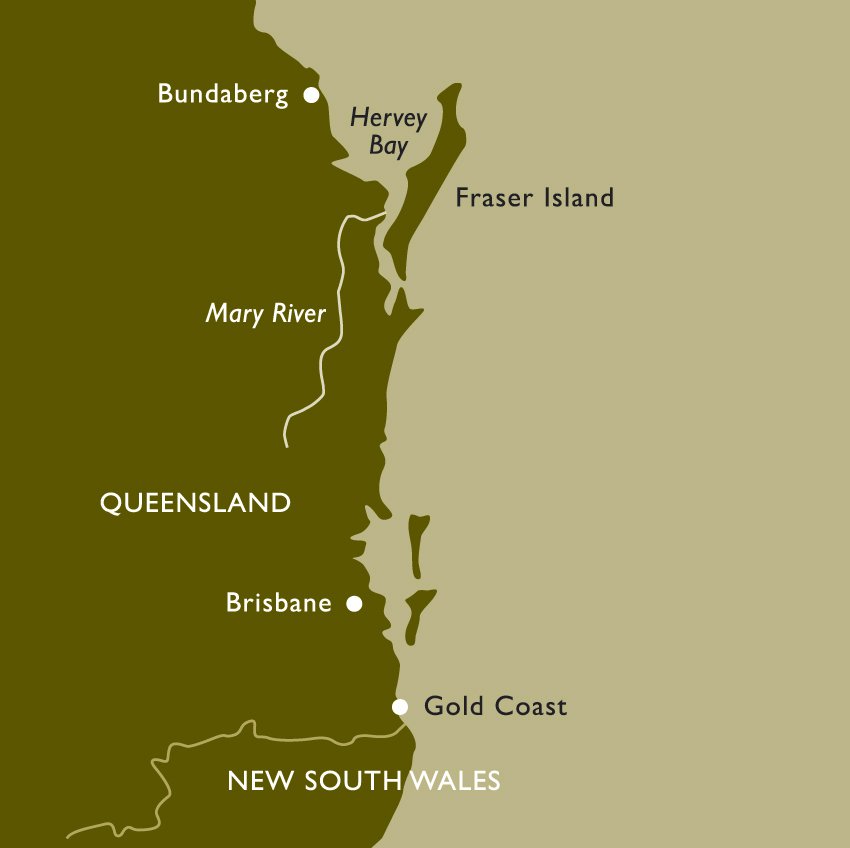Mary River Turtle
Introduction
This distinctive species of freshwater turtle was only described by scientists in 1994 from the Mary River in the hinterland of the Brisbane region. As a fully grown adult it is probably our largest freshwater turtle, and it is intriguing how it escaped notice by herpetologists for so long.
Identification
As an adult, the Mary River Turtle has a low streamlined shell, moderately short neck, and well webbed fore and hind limbs. One of the most distinctive features of this species is the extremely long tail in adult males, which can be as long as 70% of the shell length.
Habitat
The Mary River Turtle lives in freshwater habitats.
Distribution
The Mary River.

Mary River, Queensland, Australia,
Image: Design Unit© Australian Museum
Conservation status
The Mary River Turtle was in fact known from hatchlings, which were sold in pet shops in Victoria as 'Penny-turtle'. It was through these that the species came to the attention of Sydney turtle researcher John Cann, a local identity whose family ran a public snake and lizard exhibition every weekend at La Perouse for more than half a century. John Cann had a long association with the Australian Museum during his years of turtle research. He had already discovered and co-authored the description of a large and unusual species of freshwater turtle from the Fitzroy River, a species which is now recognised as one of the most threatened in eastern Australia due to its unusual biology. John has also written the only comprehensive treatment of all Australian turtles. During a period spanning more than 20 years he tried to trace the source of the baby turtles that were being sent to the Victorian pet shops. After many unsuccessful attempts and a few false trails he located the source, which was a property on the Mary River.
John described the turtle with American researcher John Leggler in 1994. Like his previous discovery, the Fitzroy River Turtle, the turtle from the Mary River is equally strange in its biology. Both species share a mode of 'cloacal breathing' where oxygen is taken in through the surface of the cloaca. And it also is recognised as one of the most threatened species of freshwater turtle in eastern Australia.


